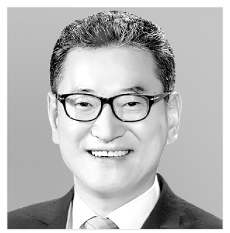Korea’s struggling auto industry

The author is a professor at Sogang University and adviser to the JoongAng Ilbo Reset Korea Campaign.
Korea’s automobile industry is at risk. All the underlying problems of the industry — the shutdown of GM Korea’s factory in Gunsan, North Jeolla, the decreased output of finished cars and parts due to sluggish sales of Korean car brands at home and abroad, chain insolvencies of partsmakers due to snowballing deficits, and the death of a partsmaker CEO from overwork and stress — have spilled over in recent years. The automobile industry was once a strong pillar of the Korean economy and exports may be headed downhill for good.
The car industry has a special place in Korea. It is responsible for 13 percent of the output of the manufacturing sector and generates 12 percent of added value. The industry affects steel, nonferrous metal, glass and other materials as well as transportation, maintenance, advertising, financial services and even the construction sector.
It is closely associated with Korean pride. Many Korean-Americans still remember their delight at seeing Korean-made Pony and Sonata cars on American roads. We took pride in the fact that we were able to ship what we can call ours. Korean cars have made staggering strides over the past decades, and the ascension of Korean brands placed Korea in the ranks of industrialized countries. Few developing countries were able to turn out decent cars, and few grew as fast as Korea in such a short period of time.
But the downturn has underscored the limits of Korean cars on the global stage. While the industry expanded rapidly, the authorities and producers did not look inward and check their competitiveness for future growth. There have been questions, but no actions followed.
The Korean car industry remains underdeveloped. Its supply chain is strictly top-down, and the parts industry does not have standalone competitiveness. Nearly 80 percent of its revenue hinges on the major automakers. Parts companies do not have the capacity to design and develop their own parts to find markets beyond their primary clients in Korea.
Since their clients are all based in Korea, their operating margin is poor. Because they cannot make big profits from sales, they do not have money to spend on innovation and research and development. This is why they go nowhere and rely on bailouts from the government when they are in trouble. The only way for parts suppliers to go global is riding on finished carmakers’ orders. They lack understanding of the global market or solutions to go global.
Finished carmakers are no better. Korean brands are quickly losing their presence and appeal in the global market because of slow responsiveness and poor strategy. As a result, they have put themselves at risk as well their supply chain.
Is there any way out? The entire habitat needs to be revamped. All trade should start with standardized parts and competitive modules. Parts companies must have their own competitiveness so that they do not have to rely entirely on Korean carmakers.
The industry requires restructuring. Although the quality of goods is excellent, there are too many suppliers vying with similar parts. In the automobile industry, a company with sales of less than 50 billion won ($44 million) is insignificant.
A restructuring fund should lead a horizontal integration to achieve economies of scale or encourage companies to shift to another industry. Outside capital like a restructuring fund can place the parts sector on more equal footing with the automobile sector and help independent companies stretch their global reach.
The parts sector should be structured to compete through cooperatives instead of individual entities. Small and mid-sized enterprises cannot win alone due to their lack of resources and manpower.
Cooperative networking can help their competitiveness. The benefits of research and development, distribution, design, test trials and government assistance can be maximized through cooperative grouping.
To go global, human talent is essential. Various incentives must be designed and sustained to draw talent for a global campaign. If individual companies cannot attract talent, economies of scale should be built through cooperative networking to share a talent pool.
Translation by the Korea JoongAng Daily staff
JoongAng Ilbo, Oct. 8, Page 29










with the Korea JoongAng Daily
To write comments, please log in to one of the accounts.
Standards Board Policy (0/250자)